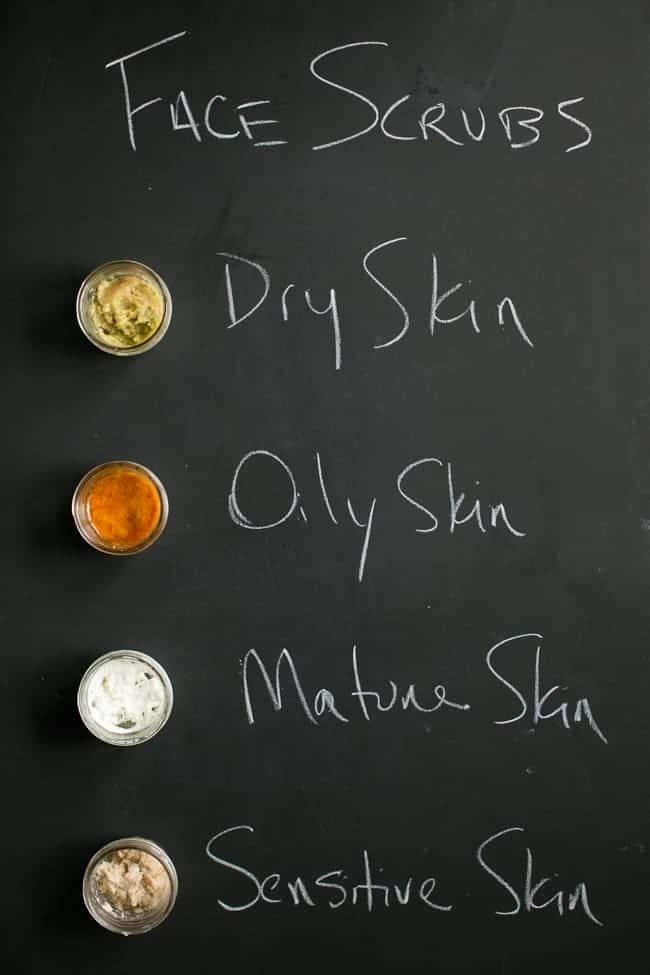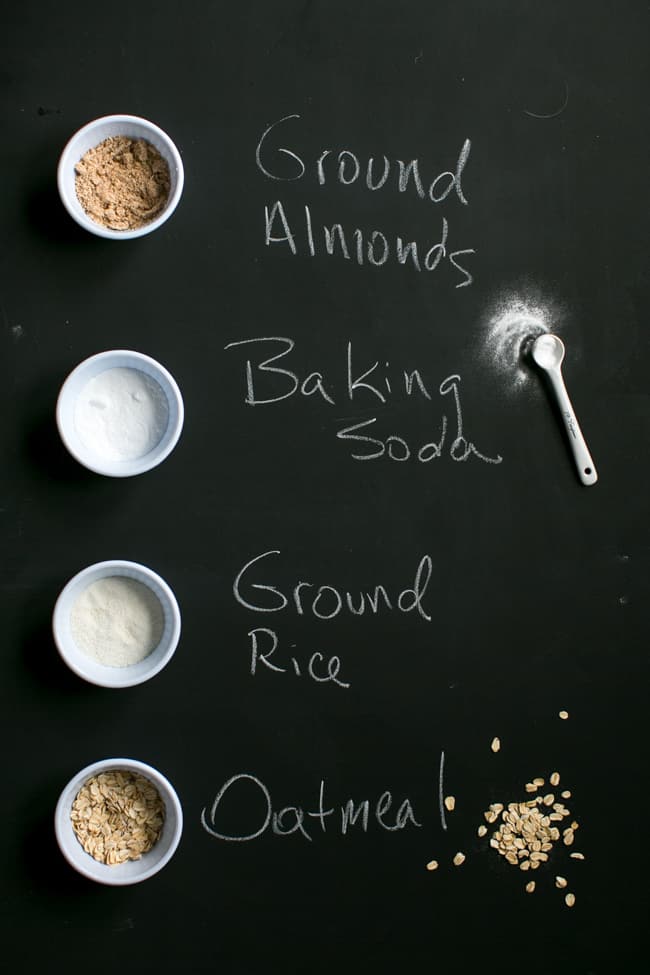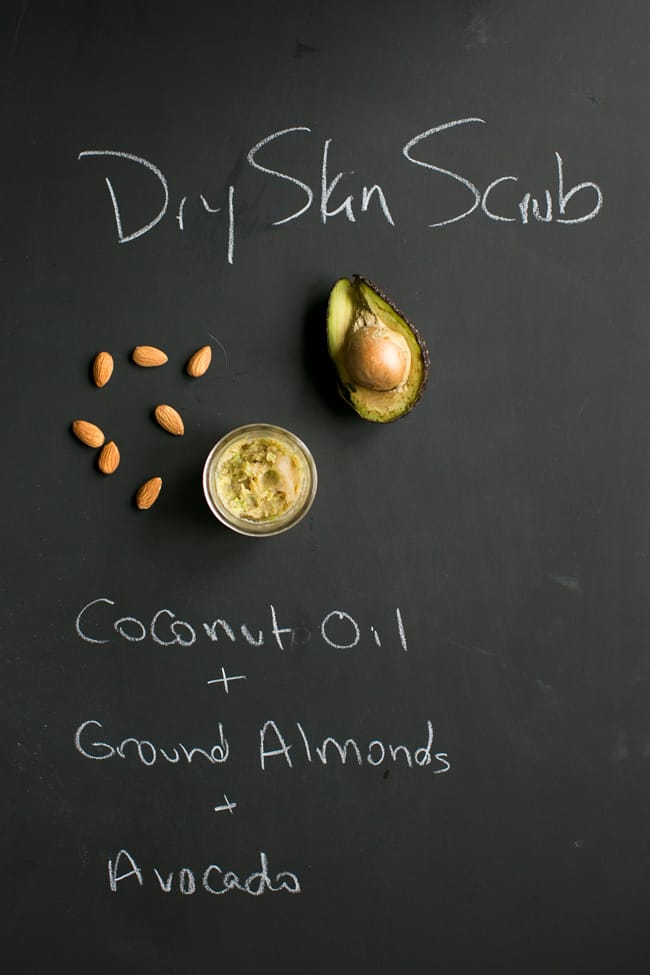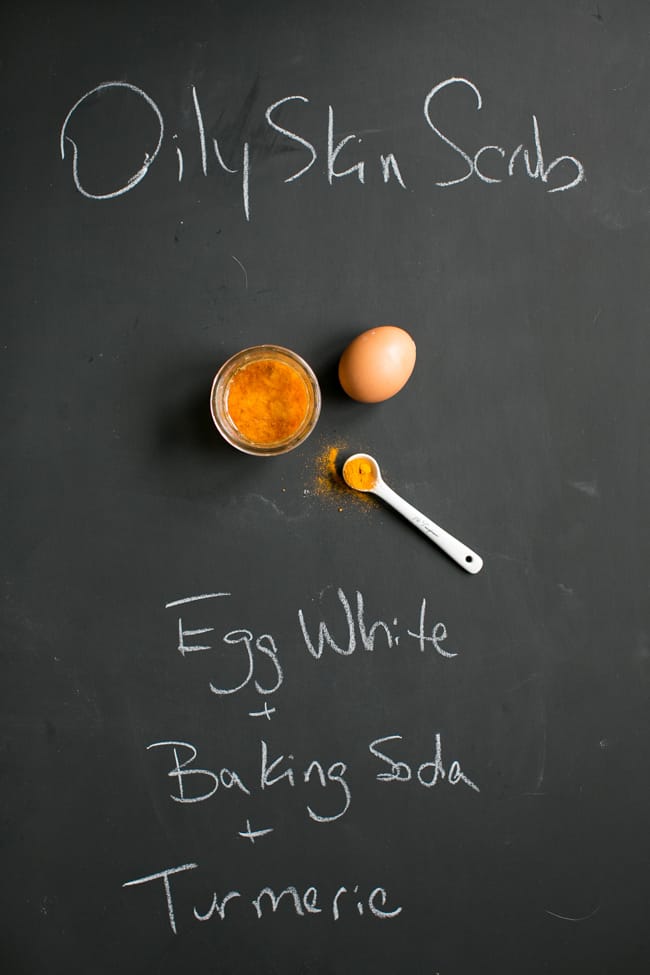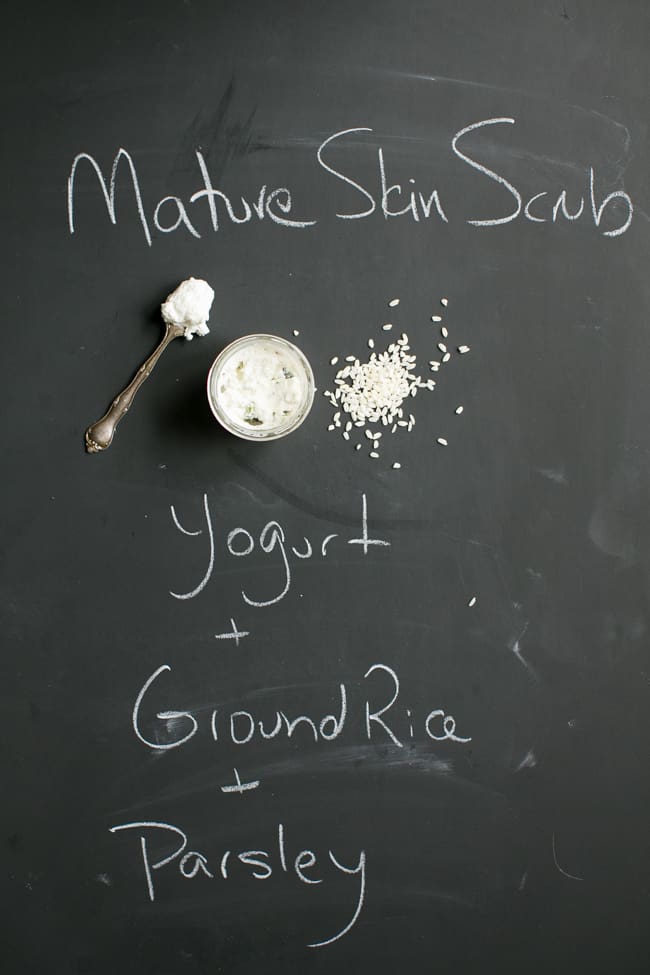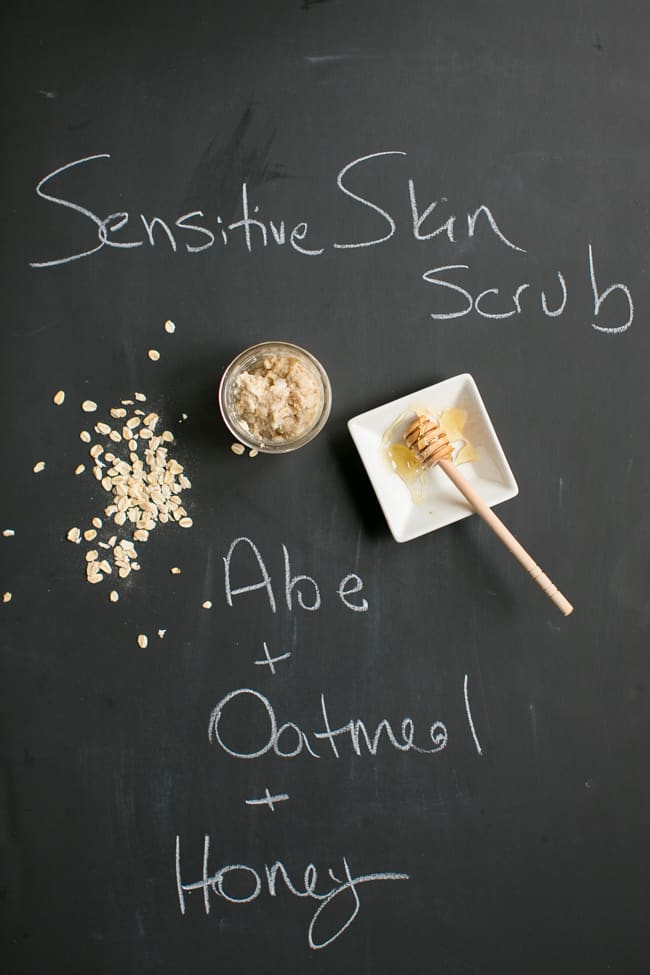[ad_1]
How to make simple DIY facial scrubs for every skin type: dry, oily, mature, and sensitive skin. Because dry skin is getting in the way of your glow.
Before you read further, stop and run the back of your hand across your cheek. Does it feel dry or a little scaly? If so, then it’s time to exfoliate. As you age, skin turnover slows, and dead skin cells pile up and stay attached for longer and longer periods of time.
Not only will it make your skin appear dull, but those dead skin cells will insulate the deeper layers from absorbing the creams and serums you’re using to prevent dry skin or aging. Things have a hard time penetrating the new skin below when old, dead skin cells are in the way.
Ideally, you should exfoliate about twice a week with a homemade face scrub. You can irritate skin by overdoing it, but a gentle scrub or peel will invigorate your skin and maximize the absorption of skincare ingredients while also gently stimulating cell renewal at the deepest layers. Plus, your skin will feel soft and smooth—even glowy.
Jump to:
How To Make a Customized Homemade Face Scrub
We’ve shared the right way to exfoliate and how to chemically exfoliate with natural alpha-hydroxy acids, but physically exfoliating is easy, too. You can raid the cupboard and mix and match common kitchen ingredients for a customized face scrub (much like we did with customized body scrubs).
Basic recipe for a customizable at-home face scrub:
- 2 tablespoon exfoliant
- 2 tablespoon oil or liquid
- 1 teaspoon of a skin-enhancing ingredient
Instructions
1. Combine the above in a small bowl and mix thoroughly. Wash face and apply scrub to damp skin with clean hands.
2. Gently massage into your skin for about a minute, starting with the jaw and working upward, but always avoiding your eye area. Rinse with lukewarm water.
3. Apply toner, then serum, and moisturizer or face oil.
4. This will yield one application and is best used immediately. Nighttime is the best time to exfoliate, so your skincare products can better absorb overnight.
Step 1: Choose the right exfoliant
Ground almonds
Ground raw almonds are great for mature skin and will leave your skin nourished and hydrated. The fine grains gently exfoliate, and the oil in the almonds smooths and provides skin with vitamins A and E [source].
Baking soda
Chemical-free, natural baking soda has a super fine texture that feels like a microdermabrasion at home. This easy cleanser is great for all skin types but works especially well on oily skin as it absorbs excess oil.
Ground rice
Asian women have used ground rice powder on their skin for ages to smooth complexions, lighten skin discolorations, and reduce wrinkles. That’s because rice grains contain loads of antioxidants [source].
Plus, I read in Giada De Laurentiis’s book Feel Good Food that she cleans her face daily with ground rice and olive oil, and that girl’s skin looks amazing!
Oatmeal
If your skin tends to be sensitive, you might want to check out the effectiveness of oats as a physical exfoliant. And the oats themselves have plenty of therapeutic properties when applied to the skin, and they contain saponins, soap-like molecules that have a cleansing action [source]. Use them whole or grind them up to gently unclog pores and soothe irritation.
Ground organic flaxseeds are another gentle but effective choice for exfoliation. Rich in anti-inflammatory and hydrating omega-3 fatty acids, they do double duty in preventing damage from free radicals.
And they contain vitamins A, C, and E, along with proteins and minerals—almost makes you want to leave it on for a while to soak up all of that goodness [source].
Step 2: Choose the right liquid
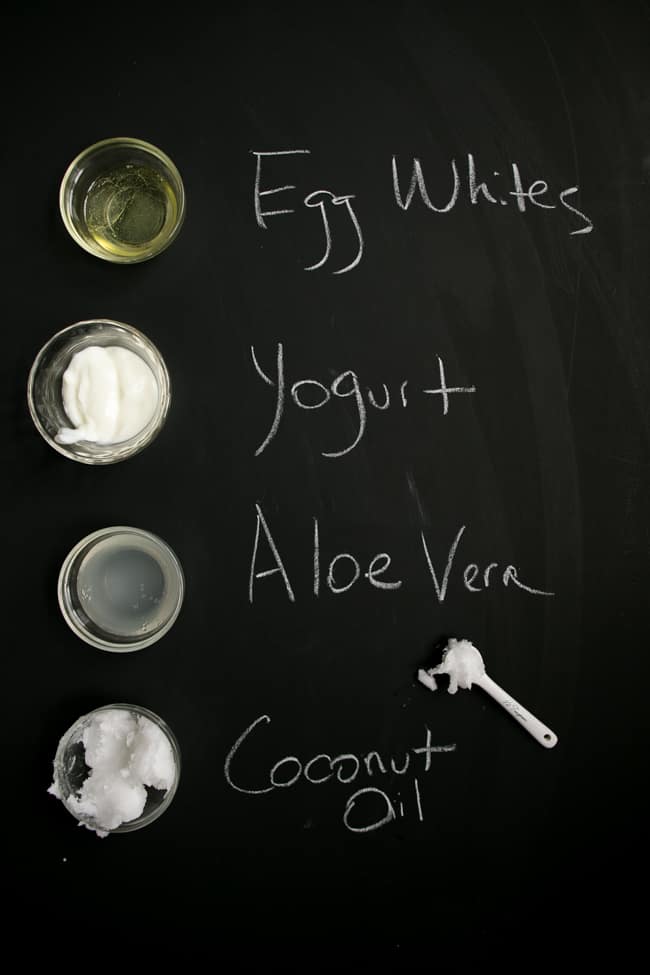
Egg whites
Egg whites are great for oily or aging skin, tightening and firming skin, and fighting off fine lines and wrinkles.
Yogurt
The lactic acid in yogurt exfoliates to reveal radiant skin while the fats and proteins plump up fine lines—so definitely go for full-fat versions [source].
Aloe vera
Aloe vera is great for keeping skin clear and healthy, not to mention what it’s best known for—reducing inflammation and pain [source].
Coconut oil
The fats in coconut oil moisturize while its lauric acid protects and softens skin. It’s also an anti-inflammatory, antiseptic, and helps maintain a healthy pH level in the skin [source].
Step 3: Choose the right extras
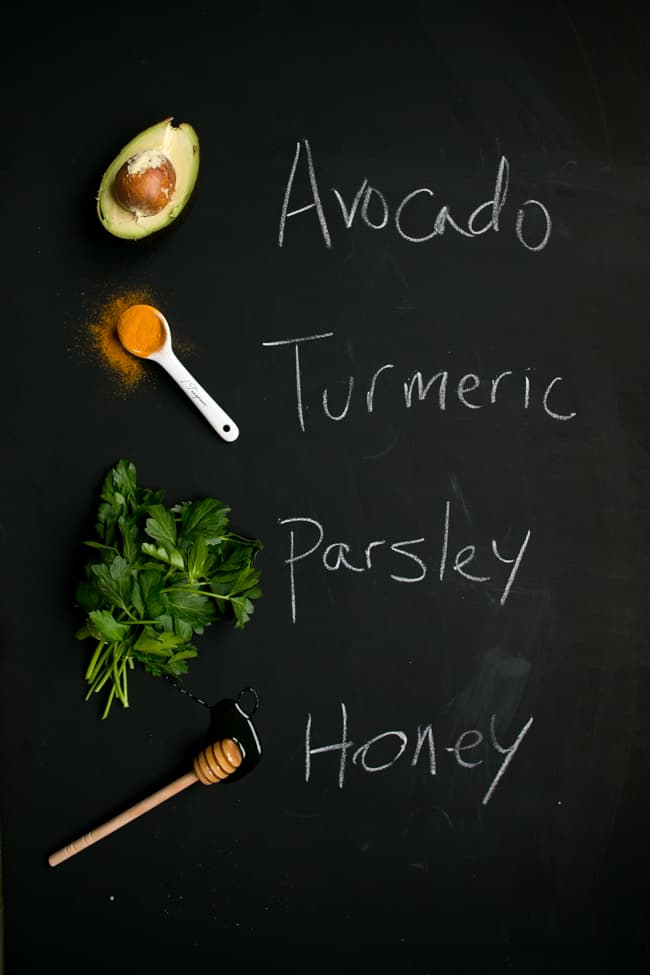
Avocado
Avocado is full of good fats that moisturize dry skin. It’s also rich in antioxidants, which are great at fighting the effects of aging [source].
Turmeric
Turn to organic, non-GMO turmeric for natural anti-inflammatories and antimicrobials when you want to beat breakouts and fade acne scars [source].
Parsley
Pick a bit of parsley to fade age spots and treat under-eye circles. It’s also great at fighting bacteria [source].
Honey
Raw honey kills bacteria, plumps skin, and acts as a humectant to draw in moisture and soothe skin. Use raw honey on red or irritated areas to calm inflammation and keep bacteria at bay [source].
Step 4: Mix up the scrub that fits your skin type
Dry Skin Scrub
Yes, you can—and should—exfoliate even if your skin is dry. Make sure you utilize the best available ingredients.
Buff off dead skin and let your fresh, new skin soak up the good fats in ground raw almonds, unrefined cold-pressed coconut oil, and fresh avocado.
Oily Skin Scrub
Let egg white tighten and tone while chemical-free natural baking soda and organic turmeric powder help regulate oil production and skin pH.
Mature Skin Scrub
Battle age spots with a combination of ground rice, yogurt, and parsley that will exfoliate and lighten discoloration when used regularly.
Sensitive Skin Scrub
Use when only gentle ingredients will do! Soothe skin with a combination of anti-inflammatory ingredients like organic oatmeal, aloe vera, and raw honey.
This post was medically reviewed by Dr. Jennifer Haley, a board-certified dermatologist with extensive experience in medical, cosmetic, and surgical dermatology. Learn more about Hello Glow’s medical reviewers here. As always, this is not personal medical advice, and we recommend that you talk with your doctor.
[ad_2]
Source link
